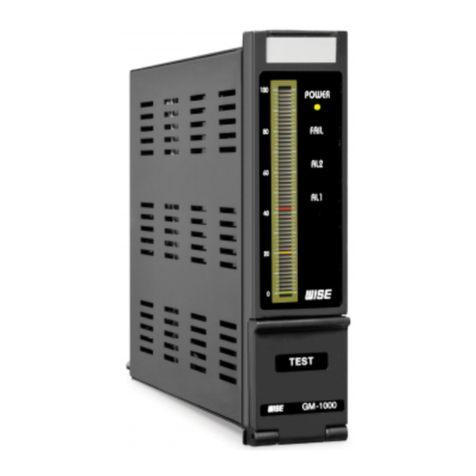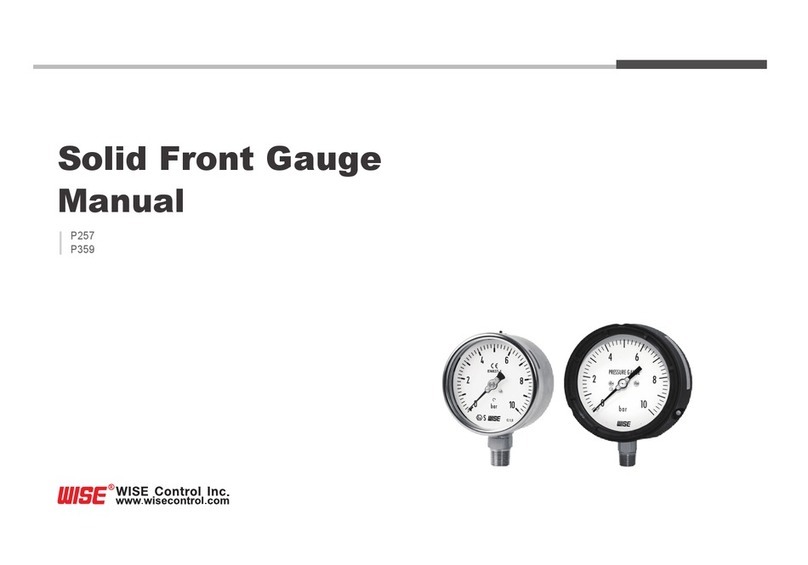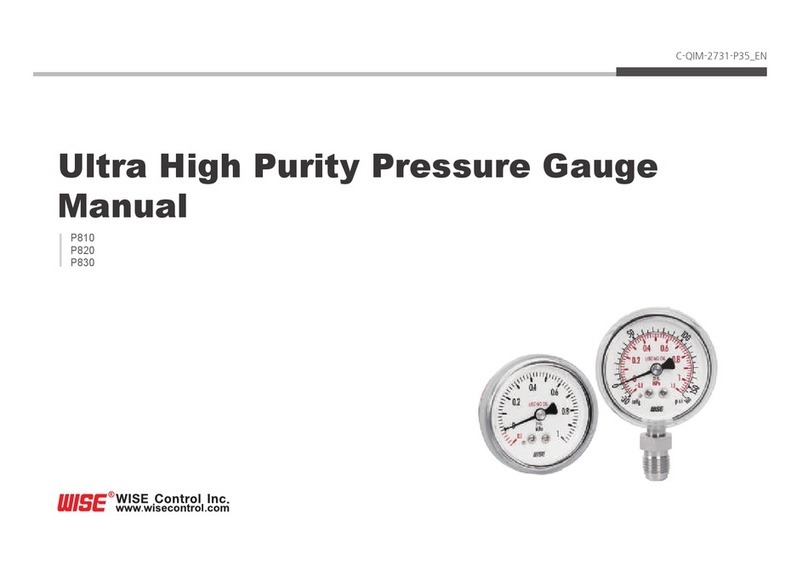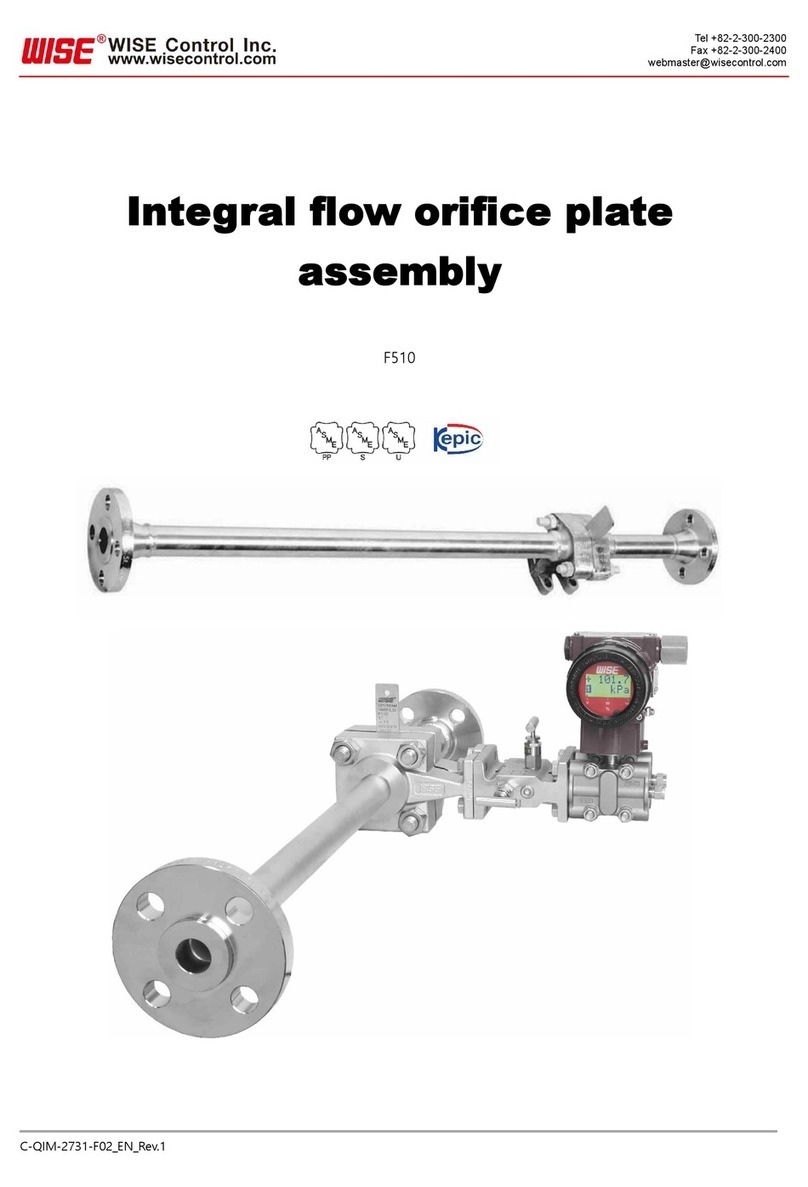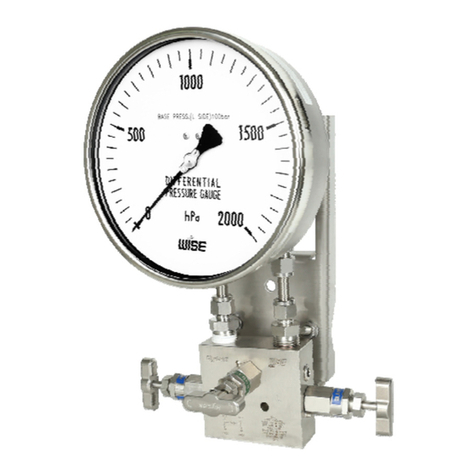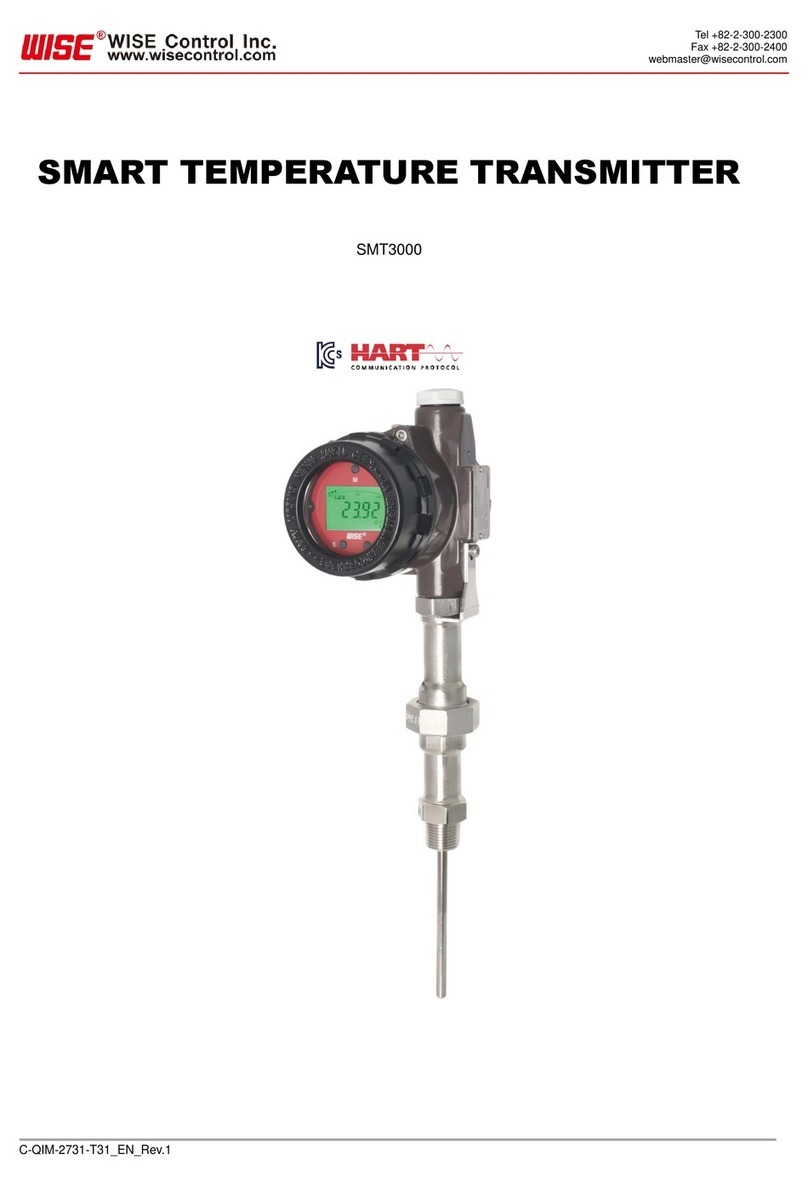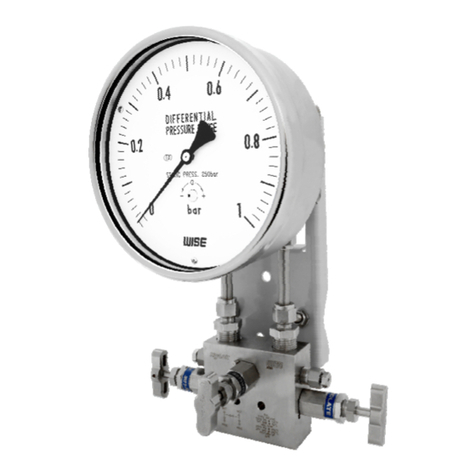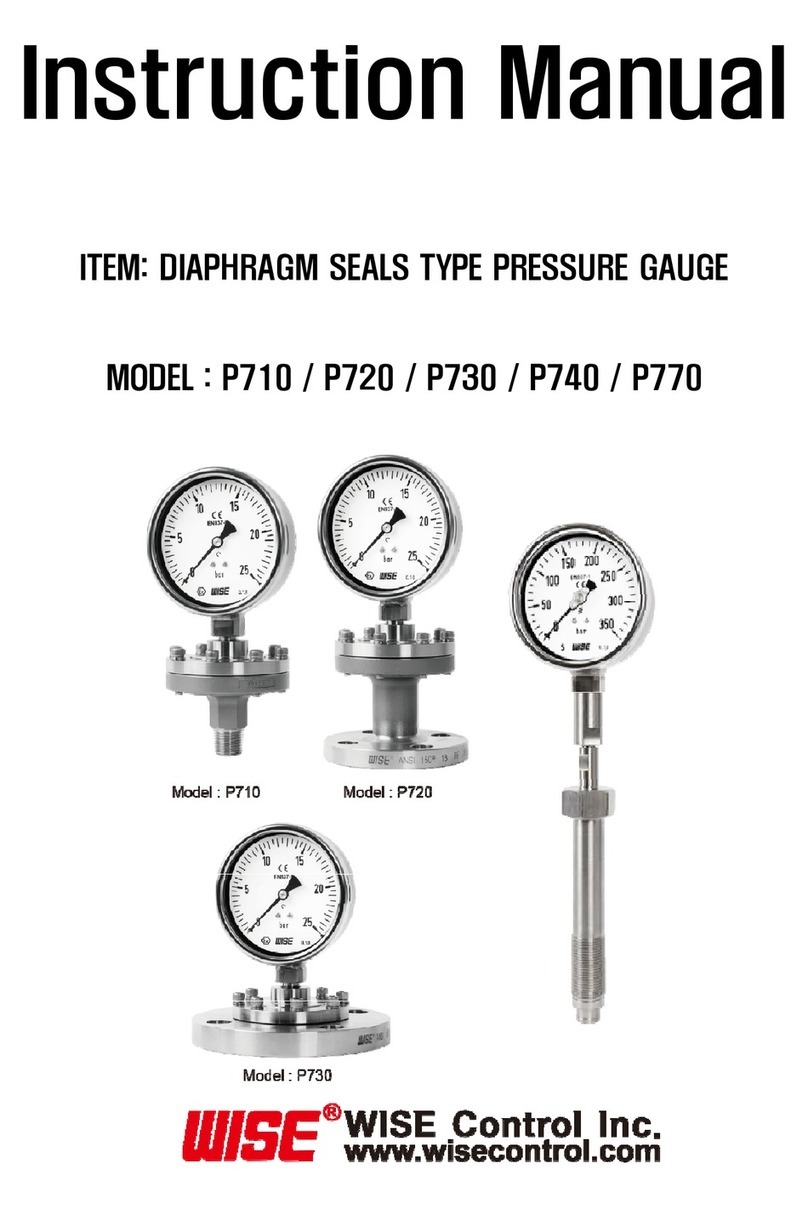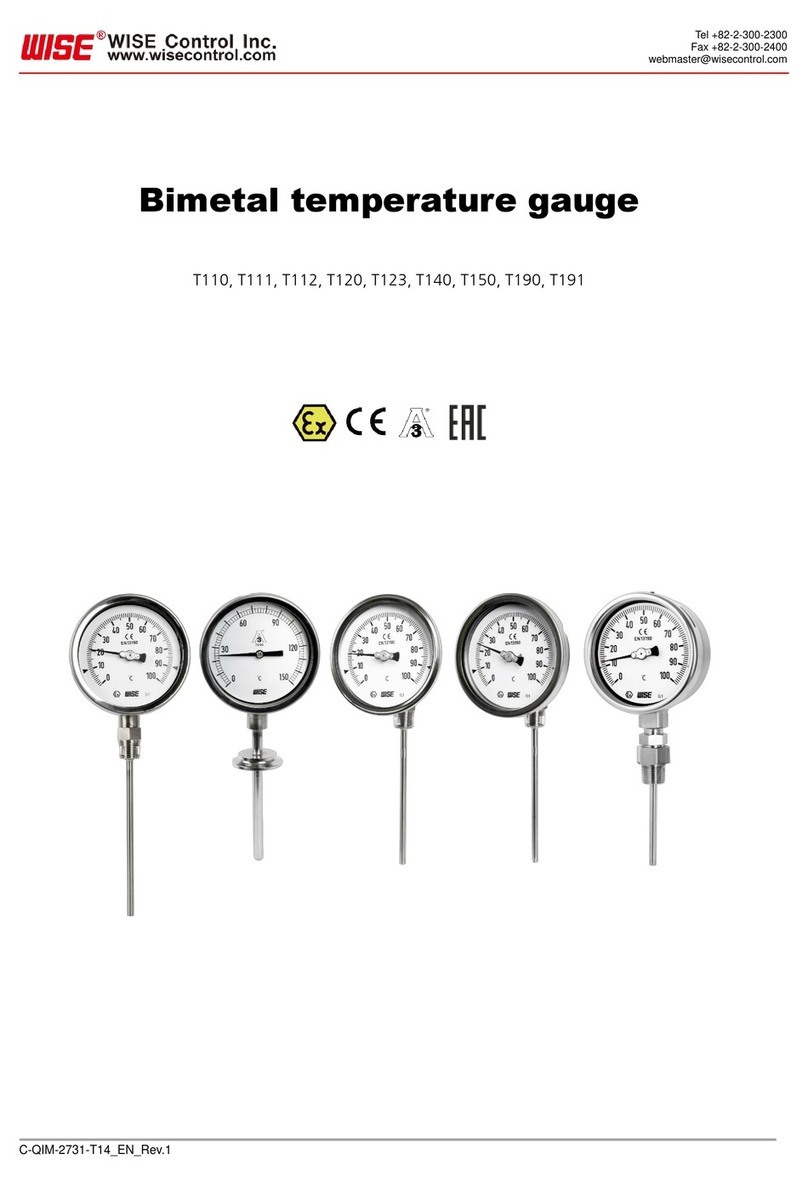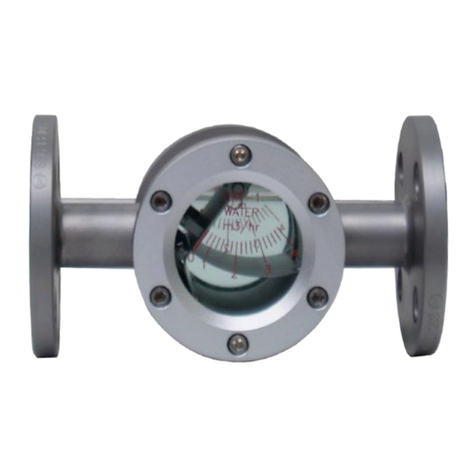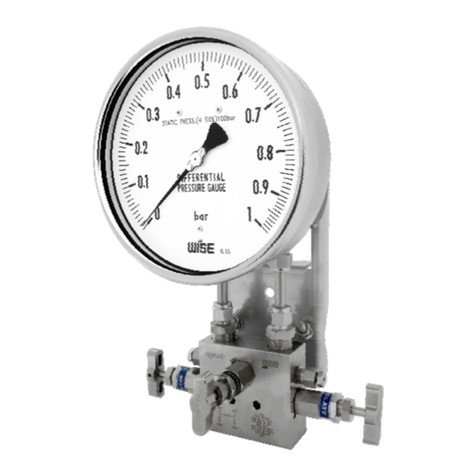
To use this product correctly and safely, please read this manual carefully before operating.
Misuse of this product might cause damage to the product and serious injury to the user.
1. Do not apply more pressure than given range.
2. Do not use the product with a corrosive fluid. A corrosive fluid can cause
the rupture of the measuring elements, and it could lead to injury or destruction.
3. Avoid excessive weight, vibration, and shock on the product.
These could cause the rupture or damage on the product, and leaked fluid can cause injury to
the user and destruction of surroundings.
4. Use the product within the given Temperature range.
More than given temperature range can cause the damage to the product, and leads to the
destruction.
5. When removing the products from its operting line, make sure to close the valve before
removing.
This will prevent the fluid or other substances to release. This release might cause the
destruciton of surroundings.
6. Use "Use No Oil" Pressure gauges for the environment where Hydrocarbon or Oxygen is
present. General Pressure gauges with the left over oil inside can lead to explosion when
it gets mixed with oxygen or Hydrocarbon.
7. When installing the product, please follow the instruciton manual for how to install.
8. Do not modify the product for other purpose.
Please consult the manufacturer for repair.
9. Do not cut off the oil cap when the product is installed outside because rain can penetrate
into the gauge and cause a dew condensation.
*To check the pressure, please remove the oil cap to release the internal pressure.
10. Work is carried out while electricity is applied.
This product cannot be used in explosion proof area.
Please use PN990( explosion proof type electric contact pressure indicator )
that is the product of our company, if necessary.
Instructions for
ro
er and safe o
eration
WARNING












